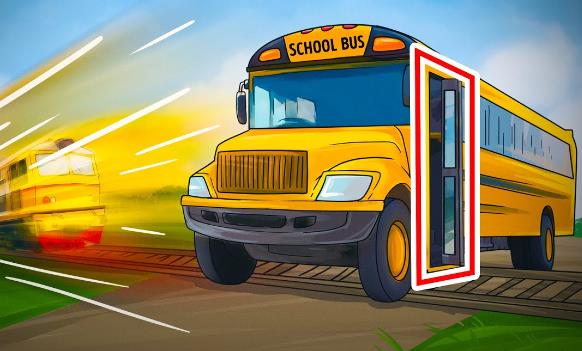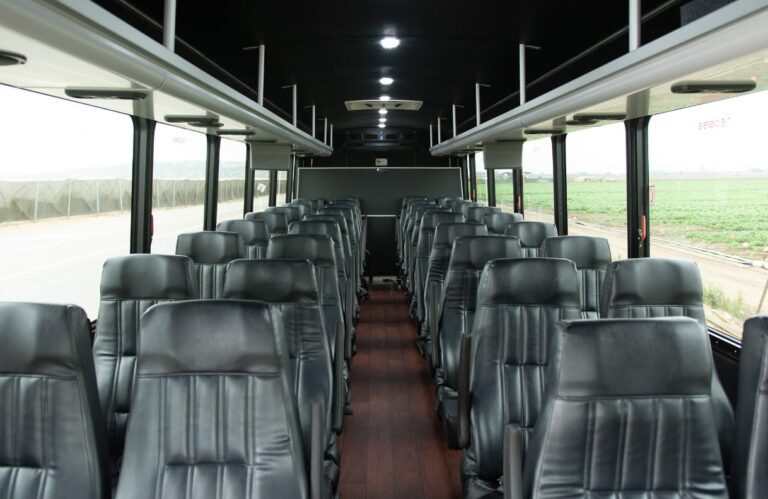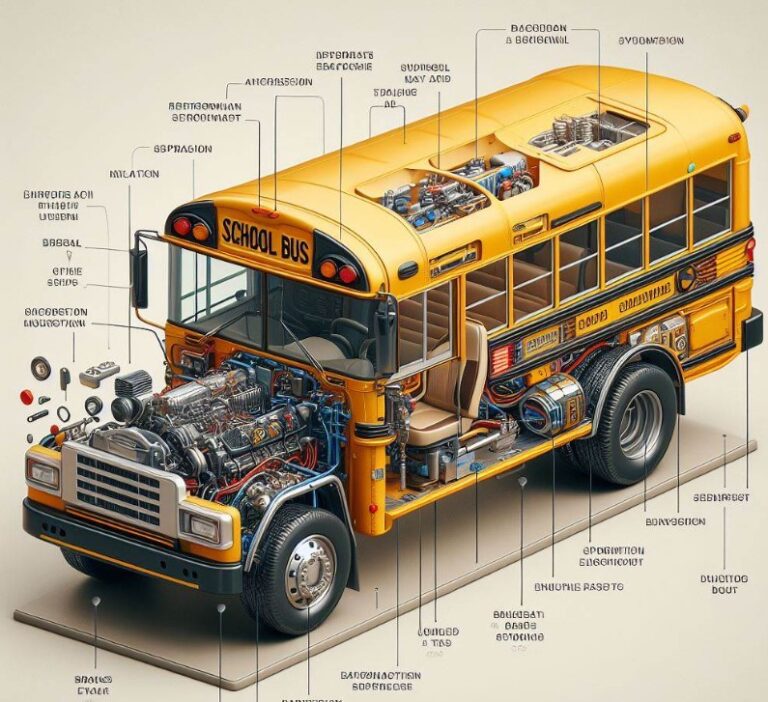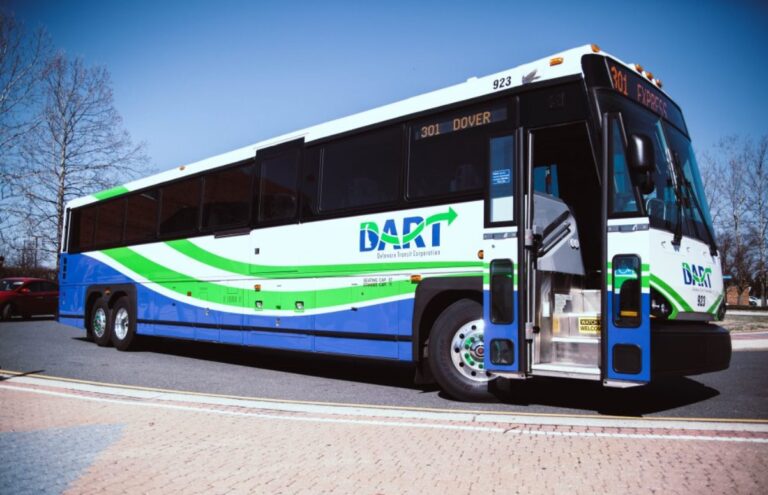Why Do Buses Open The Door At Train Tracks? Answered
Have you ever been on a bus and wondered, Why Do Buses Open The Door At Train Tracks? It’s a question that piques the curiosity of many passengers and even those who see it happen from their cars.
This practice, which may seem odd at first glance, is deeply rooted in safety protocols and has a fascinating history. Understanding the reasons behind this can shed light on the meticulous safety measures that public transportation systems take to protect their passengers.
As we delve into this topic, we’ll first explore the historical context that led to the implementation of this law. From a tragic accident in 1938 to its evolution over the years, the backstory provides valuable insights into why this practice is more than just a quirky ritual. So, let’s journey back in time and unravel the origins of this safety measure.
Key Takeaways
- The practice dates back to a tragic accident in 1938.
- Opening the door and window allows the driver to hear approaching trains.
- The law is also extended to trucks carrying hazardous materials.
- Some crossings are marked “Exempt,” meaning the stop is not required.
- Thousands of collisions occur each year at railroad crossings.
Why Do Buses Open The Door At Train Tracks?
The practice of buses opening their doors at train tracks is primarily for safety reasons. By opening the door and the driver’s side window, the bus driver can better hear if a train is approaching.

This practice became law in many parts of the United States and Canada after a tragic accident in 1938 in Salt Lake City, Utah. The accident led to the death of 24 out of 40 passengers, including the driver.
The Historical Context
The 1938 Accident
The practice became mandatory after a tragic accident on December 1, 1938. A school bus in Salt Lake City, Utah, was hit by a freight train in a blizzard, killing 24 of the 40 passengers. The driver was also among the deceased. The accident led to a change in law requiring bus drivers to open their doors at railway crossings.
Evolution of the Law
Initially, the law only required school buses to stop at railway crossings. However, the 1938 accident led to the inclusion of the door-opening requirement to enhance safety measures. The law has since been extended to trucks carrying hazardous materials.
Safety Measures

Visual and Auditory Checks
Bus drivers are trained to come to a full stop 5 to 15 feet before the crossing. They then open the door and the driver’s side window to listen for any approaching trains. This is especially crucial in conditions where visibility is low, such as during fog or snowstorms.
Exempt Crossings
Some railway crossings are marked with an “Exempt” sign. This means that vehicles like buses and trucks carrying hazardous materials are not required to stop at these crossings. These are typically crossings that are no longer active.
Statistics and Risks

Collision Data
Railroad crossing signals are generally reliable, but they do fail. Thousands of collisions occur each year between trains and cars, many of which result in fatalities. Therefore, the extra precaution of opening the door and window is a small but crucial step in ensuring safety.
Importance of Vigilance
Although railroad crossing signals are fairly reliable, it’s crucial to pay close attention when approaching railway crossings. This is especially true for bus drivers who are responsible for the safety of their passengers.
Legal Requirements

Federal and State Laws
In the United States, the law requiring buses to open their doors at train tracks is not just a federal mandate but is also enforced at the state level. Different states may have additional rules or exceptions, but the core principle remains the same: safety first.
Penalties for Non-Compliance
Failure to comply with these laws can result in hefty fines and even the suspension of the bus driver’s license. The penalties are designed to be severe to underscore the critical importance of this safety measure.
Technological Aids
Advanced Warning Systems
Some modern buses are equipped with advanced warning systems that alert the driver when approaching a railroad crossing. These systems are an additional safety layer but do not replace the need for the driver to open the door and window.
GPS and Mapping Software
Many buses now have GPS systems that indicate the presence of a railroad crossing on the route. Some even integrate with mapping software to show the train’s current location if available.
Public Awareness
Educational Programs
Various organizations and government bodies run educational programs to raise awareness about the importance of this practice. These programs are often targeted at school children, who are frequent bus passengers.
Social Media Campaigns
Social media platforms are increasingly being used to spread awareness. Hashtags like #RailSafety and #BusSafety are common during national safety weeks.
Global Practices
European Standards
In Europe, the practice varies by country. While some countries have similar laws to the United States, others rely more on technological solutions like advanced warning systems.
Asian Practices
In countries like Japan and South Korea, the focus is more on technological aids, and the practice of opening the door at train tracks is less common.
Why do bus drivers open the door while going over train tracks?
Bus drivers are mandated by law to open the door and the driver’s side window when they approach a railroad crossing. This practice originated from a tragic accident in 1938 in Salt Lake City, Utah, where a school bus was hit by a freight train during a blizzard, resulting in 24 fatalities out of 40 passengers.

The primary reason for opening the door and window is to allow the driver to hear any approaching trains, especially in conditions where visibility is compromised, such as fog or snow. This law is not only applicable in many parts of the United States but also in Canada. Some crossings are marked “Exempt,” meaning vehicles like buses are not required to stop.
Conclusion
In wrapping up this comprehensive look into the subject, it becomes clear that the practice of buses opening their doors at railroad crossings is far more than a simple procedural step. It’s a well-thought-out safety measure, deeply rooted in historical events and continuously reinforced by legal frameworks.
Understanding the “why” behind this action underscores the lengths to which public transportation systems go to ensure passenger safety. Thank you for joining us on this enlightening journey through the history, legalities, and technological advancements related to why buses pause and open their doors at train tracks.
Frequently Asked Questions
Why do buses open their doors at train tracks?
Buses open their doors at train tracks as a safety measure to allow the driver to hear any approaching trains. This practice is mandated by law in many parts of the United States and Canada.
Is this practice only applicable to school buses?
No, this law is also extended to trucks carrying hazardous materials. It’s not exclusive to school buses.
Are there any exceptions to this rule?
Yes, some crossings are marked with an “Exempt” sign, indicating that buses and other specified vehicles are not required to stop.
How effective is this practice in preventing accidents?
While railroad crossing signals are generally reliable, thousands of collisions occur each year between trains and cars. Opening the door and window adds an extra layer of safety.
What led to the implementation of this law?
The law was implemented following a tragic accident in 1938 in Salt Lake City, Utah, where a school bus was hit by a freight train, resulting in 24 fatalities.

Welcome to the exhilarating world of Matt Rex, a professional car racer turned renowned vehicle enthusiast. Immerse yourself in his captivating blog as he shares heart-pounding adventures, expert reviews, and valuable insights on cars, trucks, jets, and more. Fuel your passion for speed and discover the beauty of vehicles through Matt’s engaging stories and meticulous expertise. Join the ever-growing community of enthusiasts who find inspiration and expert advice in Matt Rex’s blog—a digital hub where the thrill of speed meets the pursuit of knowledge.






